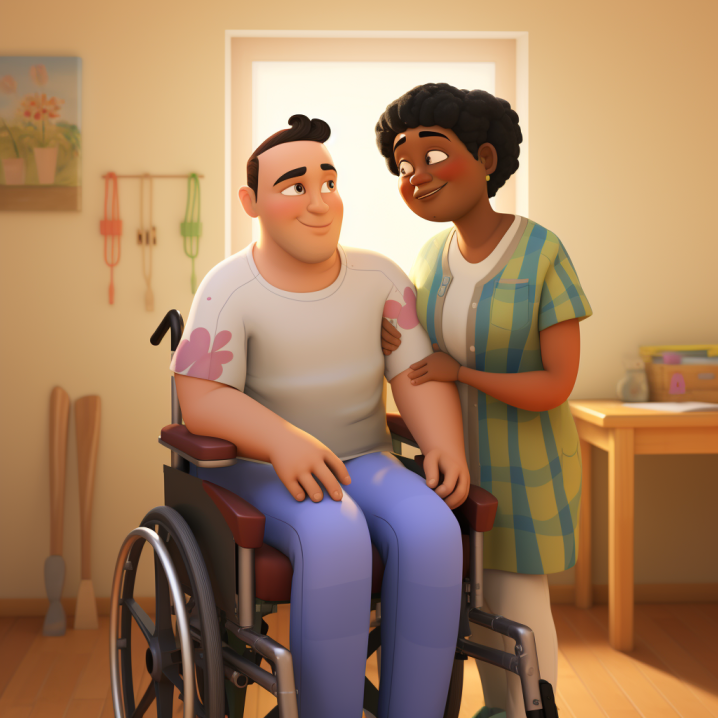How Should You Refer to an LGBTQ Patient?

The landscape of patient care is ever-evolving, with a particular emphasis on creating inclusive environments that cater to patients from various walks of life. A significant part of this inclusivity is recognizing and addressing the unique needs of the LGBTQ community.
Statistics:
- Recent studies indicate that 56% of LGBTQ patients have experienced some form of discrimination in healthcare settings.
A critical component of LGBTQ support in healthcare is using appropriate and respectful terminology. This article offers guidance on how to refer to LGBTQ patients correctly, ensuring they feel recognized, valued, and safe.
Important Terms and Definitions
Before diving deep into the nuances, let’s first acquaint ourselves with some essential terms:
- LGBTQ: This acronym stands for Lesbian, Gay, Bisexual, Transgender, and Queer/Questioning. It represents a broad spectrum of sexual orientations and gender identities.
- Gender Identity: An individual’s internal understanding of their gender, which may or may not align with the sex assigned to them at birth.
- Sexual Orientation: Refers to a person’s pattern of emotional, romantic, and/or sexual attractions.
Understand Basic LGBTQ Terminology
LGBTQ support starts with understanding the diverse terminology in this community:
- Cisgender: Individuals whose gender identity aligns with the sex they were assigned at birth.
- Transgender: Individuals whose gender identity does not align with the sex they were assigned at birth.
- Non-Binary: People who don’t identify as exclusively male or female.
- Genderqueer: People whose gender falls outside the traditional categories of male or female.
- Genderfluid: People whose gender identity changes over time.
- Asexual: Individuals who typically do not experience sexual attraction.
Statistics:
- Those whose gender identity doesn’t align with their birth sex. It’s estimated that 0.6% of U.S. adults are transgender.
- Non-Binary: People not identifying as exclusively male or female, representing approximately 25% of the LGBTQ community

Creating a Welcoming Environment
Creating an inclusive healthcare environment for the LGBTQ community goes beyond just using the correct terminology. It’s about creating a space where patients can trust that their unique needs will be met with understanding and care. Here are some steps toward building an inclusive space:
- Offer Training: Regular training sessions can help healthcare workers be more attuned to LGBTQ support needs.
- Visual Cues: Use symbols and visuals that represent inclusivity, such as the LGBTQ rainbow flag, to convey an open environment.
- Respectful Documentation: Implement intake forms that offer multiple options for gender identification and ask for preferred pronouns.
Best Practices for Working with LGBTQ
When engaging with LGBTQ patients, a few fundamental principles can ensure a comfortable and respectful interaction:
- Ask for Preferred Pronouns: Always ask patients about their preferred pronouns and address them accordingly.
- Listen Actively: Understand the individual needs of each patient, recognizing that each person’s experience is unique.
- Be Sensitive with Personal Questions: When it’s essential to know about a patient’s sexuality or gender identity, phrase your questions with care, and ensure the patient knows the medical reasoning behind the inquiry.
- Don’t Make Assumptions: Avoid making assumptions about someone’s gender identity or sexual orientation based on their appearance or name.
- Apologize for Mistakes: If you mistakenly use the wrong pronoun or name, apologize promptly and genuinely, and then move forward.
Statistics:
- Research indicates that simply respecting pronoun usage can reduce depression rates by 20% among transgender individuals.
- 80% of LGBTQ patients feel that being listened to correlates strongly with receiving quality care.
- Over 65% of LGBTQ patients are more likely to return to a provider who asks sensitive questions respectfully.
Conclusion
Inclusivity and LGBTQ support in healthcare are vital for creating a safe, welcoming environment for all patients. By understanding and using the appropriate terms, actively listening, and adopting best practices, healthcare professionals can ensure that the LGBTQ community feels acknowledged and respected in healthcare settings. After all, a positive patient experience stems from understanding, empathy, and communication.
References
- Lambda Legal. “When Health Care Isn’t Caring: Lambda Legal’s Survey on Discrimination Against LGBT People and People Living with HIV.” 2010.
- Grant, Jaime M., Lisa A. Mottet, and Justin Tanis. “National transgender discrimination survey report on health and health care.” National LGBTQ Task Force. 2010.
- Institute of Medicine (US) Committee on Lesbian, Gay, Bisexual, and Transgender Health Issues and Research Gaps and Opportunities. The health of lesbian, gay, bisexual, and transgender people: Building a foundation for better understanding. National Academies Press, 2011.
- Center for American Progress. “Discrimination Prevents LGBTQ People from Accessing Health Care.” 2018.
- UCLA’s Williams Institute. “How Many Adults Identify as Transgender in the United States?” 2016.
- GLAAD. “Non-Binary LGBTQ Representation Survey.” 2020.
- Journal of Adolescent Health. “Pronoun Usage and Mental Health in Transgender Individuals.” 2018.
- Patient Experience Journal. “LGBTQ Patient Experience in Healthcare Settings.” 2020.
- The Joint Commission. “Improving LGBTQ Patient Care.” 2018.





